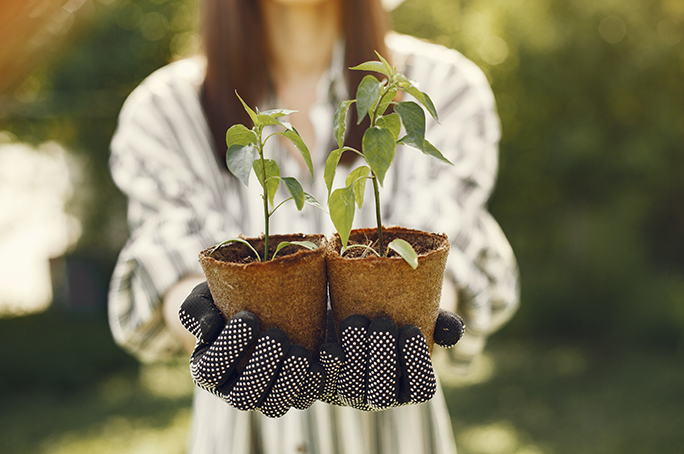After putting a fair amount of effort into starting seeds indoors, the next step is to give them a relatively permanent home outside. You’ll want to time this transition perfectly and make it as easy on the greenery as possible.
So what should you do?
Mark Your Calendars

Your seed packages will probably indicate the most suitable month for the transition. Still, watch the weather. The ideal conditions are neither hot nor cold—comfortably warm weather is the best choice. And you’ll definitely want to let the final frosts pass.
In time, on a cold day, replant in the morning; on a hot day, do that in the late afternoon or in the evening. Ideally, you should transplant in cloudy weather.
The Answer Is in Leaf

Here’s what you should know: the first leaves to emerge are called seed leaves (cotyledons). Quite often, they look nothing like adult leaves. Instead, they may be smooth and plain-looking, with a basic shape. And they’re always the lowest on the stem, sometimes even hidden beneath the growing medium.
A seedling is ready to be transplanted when at least 3 true leaves emerge. Count the leaves: if you see more than two, then the true foliage has joined the party!
What’s Next?

Is the adult foliage showing? It’s time you loosened up the soil and amended it if necessary. For example, if you used it last season, the medium may be depleted of nutrition.
After that, dig holes big enough to fit the seedlings’ balls of soil—the old soil will help lessen transplant shock. Space the holes to give the plants room to grow. Remember that they’ll get considerably bigger as they mature! Watering before removing the rootball may ease the process of taking it out. Make sure all roots are covered with soil. If some of your greenery has grown leggy, plant it deeply to keep it safe.
Water each green baby right after transplanting it.
Go the Extra Mile

There’s always more to do to ensure that our green friends are happy. Consider these pointers before you go:
- Given that the seed leaves are turning yellow or the roots are peeking out the drainage holes while the weather’s still not letting you move the greenery outside, repot the seedlings into larger containers. Disturb the roots as little as you can and wait for the weather to get better.
- If you start seedlings hydroponically, move them to temporary containers before exposing them to the outside world.
- Don’t forget to harden off the greenery. Overall, It’s always a good idea to adjust the growing conditions of plants gradually, as they generally don’t appreciate sudden changes.
- If harsh weather makes a comeback, cover your newly moved babies with a protective sheet. Elevate the cloth with sticks or stakes so that it doesn’t touch the greenery.
Watch your sprouts in their first week out to make sure they establish well and give them drinks as appropriate. You can set watering reminders in the app, and Plantum will be there for you along the way.
